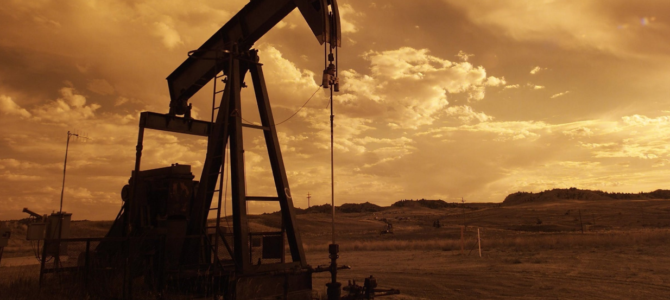
This Aug. 28 marks the 160-year anniversary of the birth of the oil industry, not in Saudi Arabia, but in western Pennsylvania, right here in the United States. Don’t let this day slip by without giving thanks toward an industry that has done so much, including to save the whales, to improve the quality of life for many and transform our society for the better.
Way before the birth of the oil industry in 1859, knowledge of oil had been around for centuries. Archaeologists discovered that the Mesopotamians and the Babylonians used oil in construction and medicines.
Since oil often bubbled up to the surface, for hundreds of years the Seneca Indian tribe in Pennsylvania had collected some from creeks and water wells and used it as an insect repellent and as a medicine to treat stiff joints and ailments. By the 1850s, however, numerous salt miners in western Pennsylvania began to regard oil as a nuisance because it often emerged at the surface of their salt wells, and they didn’t know how to tackle the issue until Samuel Kier came along.
Finding New Uses For Oil
Kier and his father were owners of several salt wells at Tarentum, Pennsylvania. Initially, Kier was just as irritated as everyone else that oil kept contaminating his salt well. But unlike the rest, Kier initiated a chemical analysis of the oil and discovered that some of its components were identical to the “American Medicinal Oil” his wife used for joint pain.
A good entrepreneur never wastes new opportunities. In 1852, Kier began to sell oil from his salt well as “Kier’s Rock Oil” in 8-ounce jars for 50 cents each, marketing it a “medicine” for burns, asthma, and many more ailments.
Since there was more oil than Kier could sell as medicine, he began to look for other ways to commercialize his excessive supply. He sent a sample to professor James Curtis Booth of the Franklin Institute in Philadelphia, founder of the first commercial chemical laboratory in the United States. Booth’s analysis proved that the rock oil could be distilled for use in lighting.
Back then, people relied on oil candles and lamps that used whale blubber for lighting. Whale blubber was not a viable option for the poor, however, because it was too costly to produce. It required big ships and manual labor to hunt whales, not to mention it is difficult to keep in storage for a long time and has a very unpleasant smell.
The supply of whale blubber was also limited: An average-sized whale could only produce between 25 to 40 barrels of oil. Starting in the 18th century, the Industrial Revolution drove up demand for whale blubber, and the hunt for whales to meet such demand almost drove them into extinction. Innovators had been searching for different materials that could provide lighting in a cheap, clean, and safe manner.
In the 1850s, supported by Booth’s analysis, Kier began to experiment with different lamps that could burn his rock oil, which he called “carbon oil.” Two New York lawyers, George Bissell and Jonathan Eveleth, got some of Kier’s petroleum samples, immediately recognized its potential, and founded the Pennsylvania Rock Oil Company. They leased land along Oil Creek, a Pennsylvania site known for oil seeping to the surface of the water.
The founders hired Yale chemistry professor Benjamin Silliman Jr. to initiate further analysis on the sample they collected. Silliman’s analysis concluded that the company possessed “a raw material from which, by simple and not expensive process” illuminant and a host of other useful byproducts such as paraffin could be produced.
The founders of the Pennsylvania Rock Oil Company were now convinced they were on the right track, but they couldn’t build a profitable business by simply waiting for oil to come out of the ground on its own. Their biggest challenge now was how to get the oil out of the ground in a commercially viable way.
The Birthday of the Oil Industry
James Townsend, a banker and an early investor in the Pennsylvania Rock Oil Company, sent one of his acquaintances, Edwin Drake, to Titusville, Pennsylvania, in 1857 to search for large marketable deposits of oil and to find ways to extract it. Townsend endowed Drake with the title of “colonel” to impress the local folks and ensured Drake had skin in the game by selling him $200 worth of stock in the Pennsylvania Rock Oil Company.
Drake had no geological background, and he failed many times in the following year and a half in his quest for finding large oil deposits. Later, he borrowed an idea from salt mining, built a tall wooden structure called a derrick to hold the drill machine, and started drilling. On Aug. 28, 1859, his assistant Billy Smith noticed oil coming out of a well he had drilled the day before.
Ron Chernow, author of “Titan: The Life of John D. Rockefeller, Sr.,” describes the significance of this day: “It was less a matter of Drake discovering oil — its existence was scarcely a secret — than of his figuring out a way to tap commercial quantities in a controlled process so that it could be pumped from the earth in a systematic fashion.” Drake’s success soon attracted many fortune seekers to Oil Creek, including John D. Rockefeller, who later founded Standard Oil. The oil boom began.
Once Americans put their hearts, souls, and sweat to something, they become unstoppable. History records show, “By the end of 1859, wells sprouted throughout the oil country. Those pioneer wells produced about 4,500 barrels that year. In 1860, wells in northwestern Pennsylvania produced several hundred thousand barrels, and by 1862, production reached three million barrels.”
The oil boom turned many hardworking and daring Americans from rags to riches in no time. Therefore, Aug. 28, 1859, is forever remembered as the birthday of the modern oil industry, and the day Edwin Drake entered history books as the father of oil wells.
The Oil Industry Propelled Countless Other Industries
The oil boom accelerated the Industrial Revolution in the United States. It stimulated the growth of many other industries, including the railroads. A whole generation of American people’s lives drastically improved when kerosene lamps became an affordable household item. Staying active after dark was no longer a luxury only the wealthy enjoyed. Kerosene lamps brought comfort and progress to many households and extended people’s productivity and quality time with family well into the night.
Americans weren’t the only people who benefited. In the 1880s, America exported 70 percent of its oil to other countries. Kerosene lamps lit up places as far away as Japan and China. The widespread use of kerosene saved whales from being slaughtered for lighting oil.
Later, when the automobile and airplane were invented, the oil industry powered these new forms of transportation that not only fundamentally changed how we travel but how we live, not to mention that various byproducts that resulted from the oil industry, such as plastic, medicine, and computers, continue to benefit Americans and people all around the world in countless ways, even to this day.
It’s fair to say that, without these early Americans’ entrepreneurial spirit and ingenuity, today’s Americans may not be able to enjoy the kind of prosperity and comfort we often have taken for granted. The rest of the world may have remained a dark place as well.
This Aug. 28, 2019, when you turn on the lights or step into a warm shower, grab a cup of hot coffee, drive your car home, turn on your computer at work, hop on an airplane to visit clients or distant family, turn on your stove to make dinner for your loved ones, and read your children bedtime stories, take a moment to appreciate the significance of this day, of the historical efforts, not through exploitation of others, but through creativity, innovation, vision, hard work, and taking risks that have made all the comfort and convenience you enjoy today possible.
Be proud of what America and Americans before us have accomplished.









